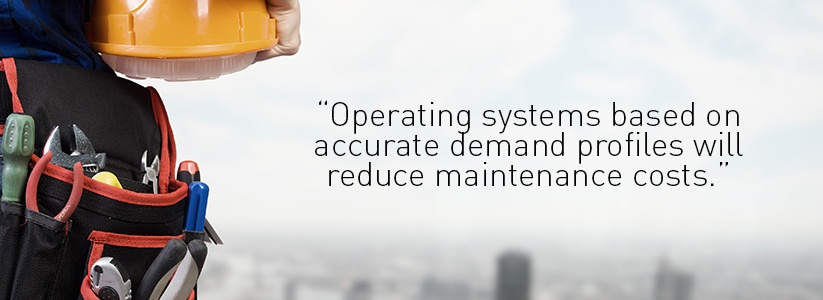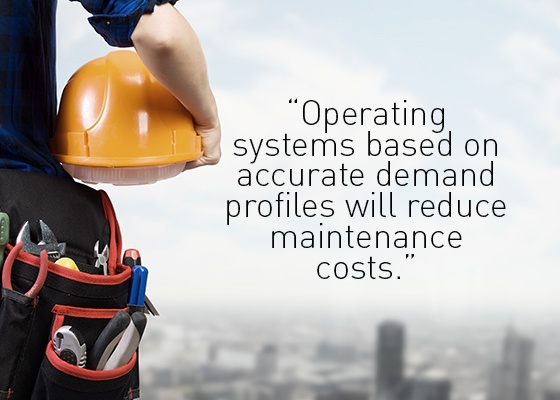Heat networks that are designed for both reliable and efficient operation will minimise unwanted system operating problems and costly downtime associated with equipment breakdowns, both of which increase maintenance costs.

In recent years, much has been learned on why and how systems should be designed and installed (and existing systems upgraded). This has resulted in the much needed publication of the joint CIBSE/ADE Heat Networks: Code of Practice for the UK (CP1).
The objective of the code, ultimately, is to ensure that network operators and developers take a consistent approach to heat networks – especially in their design – and therefore deliver a more cost-effective installation and system operation which greatly improves preventative maintenance practices.
Network demands need to be proven
Principles of best practice within the Code of Practice provide guidance on the minimum standards required to achieve an optimised design for increased system quality and efficiency.
The main and critical factor in any system design is that it must be accurately modelled so that it is designed to meet the actual demand profile of its customers. Many scheme operators are easily persuaded to add contingency into a design by oversizing system equipment and pipework. Operation at unnecessarily high flow and return temperatures with a low difference between the two temperatures (a low ‘delta T’) is also widely accepted in the early design stages.
This is understandable as “contingency” is the cornerstone of any robust project plan. This may derisk the design but will produce higher initial capital cost investment, and increase the network operation and whole life costs. This is because oversized, plant, pipework and pumps have higher running/energy costs and oversized andy oversized equipment adds to one off capital and ongoing maintenance costs.
Also, an over-specified system will operate at lower efficiencies, which pushes up operating costs and consequently increases long-term maintenance costs. Best practice for system modelling requires the use of accurate metering to prove demand profile data, which can then be used to precisely calculate heat outputs.
Better design means better maintenance
As with any operating system, the design of equipment installations should allow for good access to carry out regular inspections and maintenance.
Efficient operating systems - those based on accurate demand profiles - will reduce levels of equipment wear and tear and therefore minimise maintenance costs. Some essential best practice design principles that help ensure systems to operate efficiently include:
- Optimised pipework design – it’s not just about ensuring pipework is right-sized, but also that pipe lengths are not increased by poorly designed piping routes.
- Reduced network flow and return temperatures - and increased network delta T – improve system flow control by eliminating unnecessarily high system flow rates. This will optimise pump and pipework sizes and significantly improve the system/plant efficiency and energy costs, and save energy by reducing pipework heat losses.
- Lower operating temperatures also mean that alternative materials may be considered, e.g. polymer piping.
- Minimise system heat losses by ensuring all pipework and system equipment is fully insulated to the required specification and thickness.
- Installation of accurate metering at strategic positions around a network will enable comprehensive monitoring of the network’s thermal operation and efficiency. This provides essential information for preventative maintenance programmes.
In short, scheme operators often need a more accurate and more detailed view of how their heat network will need to operate. Design “too small” and the negative ramifications on future capacity are clear. But, design “too large” and the potential for escalating maintenance and associated costs also grow exponentially.
Takeaways:
- Use best practice design objectives in the CIBSE/ADE Code of Practice.
- Establish and verify actual network demands by modelling, including using accurate metering data.
- Ensure networks are not oversized, systems operate at lower temperatures, pipework heat losses are minimised
- Use accurate metering data for ongoing performance monitoring.



